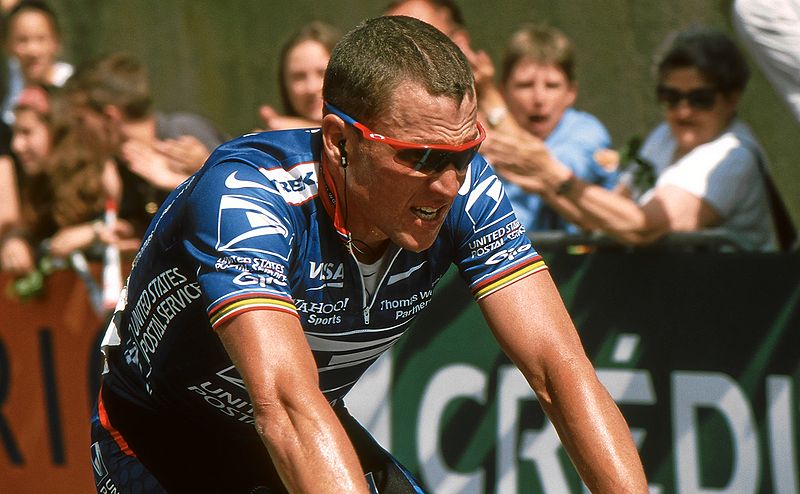The U.S. Anti-Doping Agency (USADA) has produced a 200-page tome of evidence, listing 26 accusers, against Lance Armstrong and his team in what the agency has called “the most sophisticated, professionalized and successful doping program that sport has ever seen.”
Following a lifetime ban and the removal of his seven Tour de France titles, the cycling and charity wristband icon challenged the USADA to present hard evidence of his doping. As John Leicester of the AP commented, “Lance Armstrong once said the extraordinary accusations that he doped needed to be backed by extraordinary evidence. Well, the evidence is more extraordinary than anyone could possibly have imagined.”
The report includes testimony from 11 of Armstrong’s former teammates detailing not only his personal use of performance-enhancing drugs but that he “ruthlessly” expected and “required” his teammates also partake.
The USADA called the evidence “as strong or stronger than any case brought in USADA’s 12 years of existence.” Evidence from 26 people, including 15 riders with knowledge of the U.S. Postal Service team’s doping activities, provided material for the report, which includes (via AP):
- Multiple examples of Armstrong using drugs, including the blood-boosting hormone EPO, citing the “clear finding” of EPO in six blood samples from the 1999 Tour de France that were retested. The International Cycling Union (UCI) concluded those samples were mishandled and couldn’t be used to prove anything. In bringing up the samples, USADA said it considers them corroborating evidence that isn’t even necessary given the testimony of its witnesses.
- Testimony from [three teammates] … all of whom say they received EPO from Armstrong.
- Evidence of the pressure Armstrong put on the riders to go along with the doping program. “The conversation left me with no question that I was in the doghouse and that the only way forward with Armstrong’s team was to get fully on Dr. Ferrari’s doping program,” Vande Velde testified.
- What Vaughters called “an outstanding early warning system regarding drug tests.” One example came in 2000, when Hincapie found out there were drug testers at the hotel where Armstrong’s team was staying. Aware Armstrong had taken testosterone before the race, Hincapie alerted him and Armstrong dropped out of the race to avoid being tested, the report said.
- Though she didn’t testify, Armstrong’s ex-wife, Kristin, is mentioned 30 times in the report. In one episode, Armstrong asks her to wrap banned cortisone pills in foil to hand out to his teammates.
Armstrong’s lawyers have challenged the USADA’s substantial report as “one-sided,” dismissing accusing teammates Tyler Hamilton and Floyd Landis as “serial perjurers.”
The report will now be reviewed by the UCI (International Cycling Union) who will have 21 days to appeal sanctions against Armstrong. The cyclist’s doctor, Michele Ferrari in Italy, may also face criminal charges for his role in the doping scandal.

